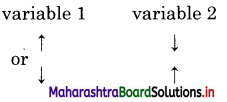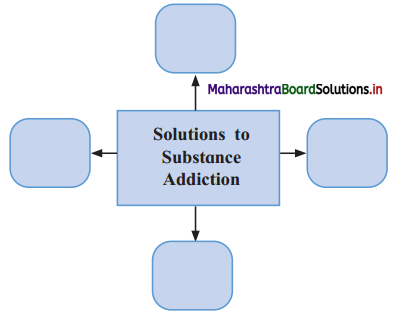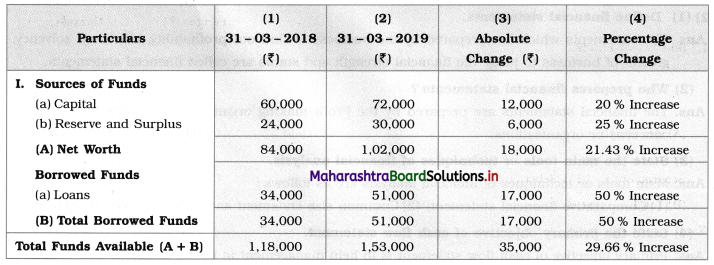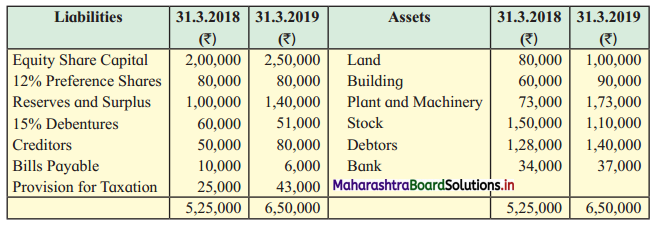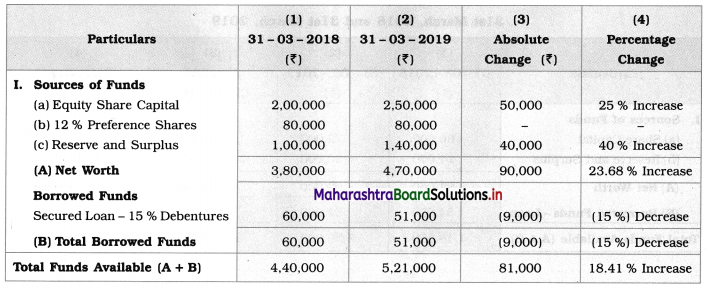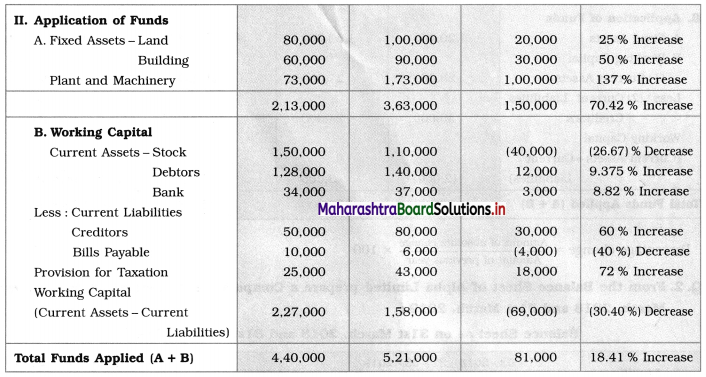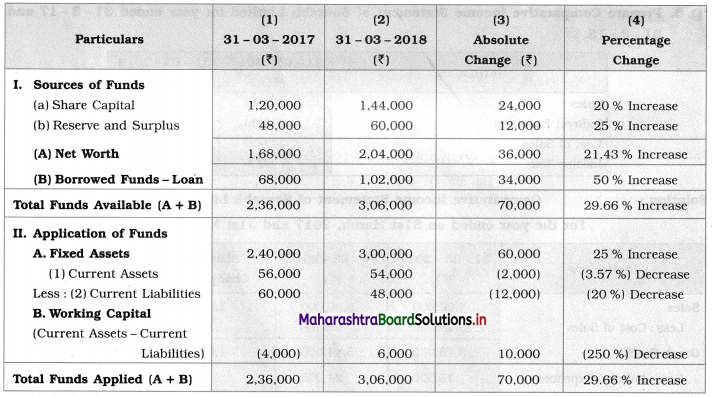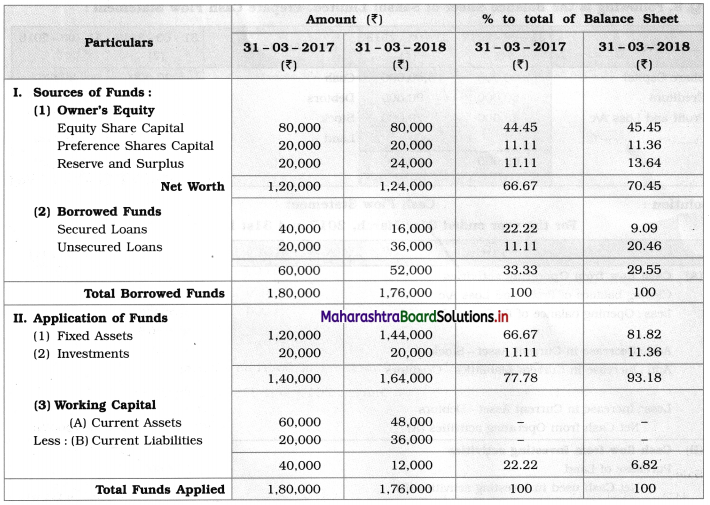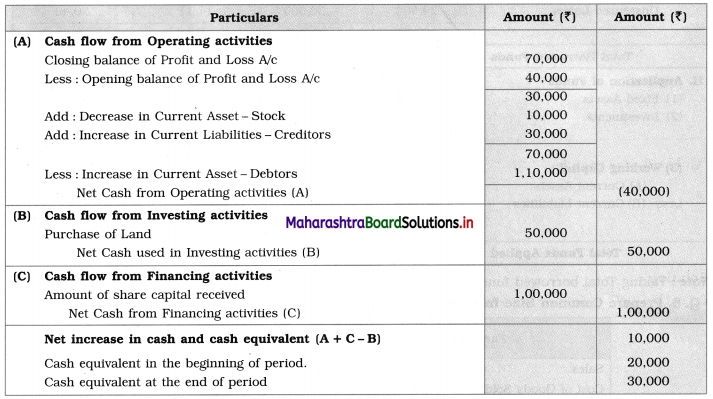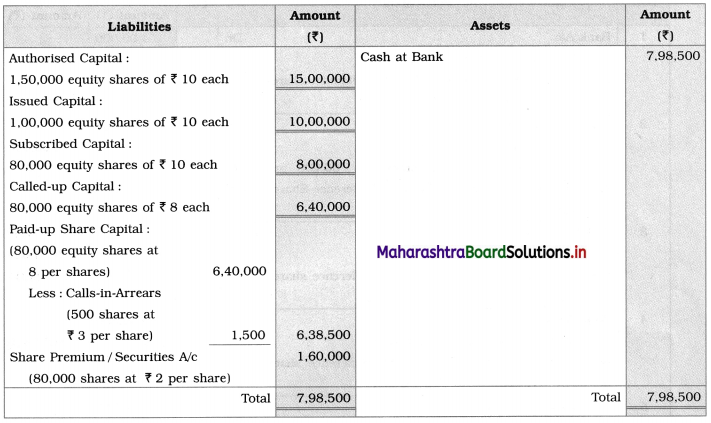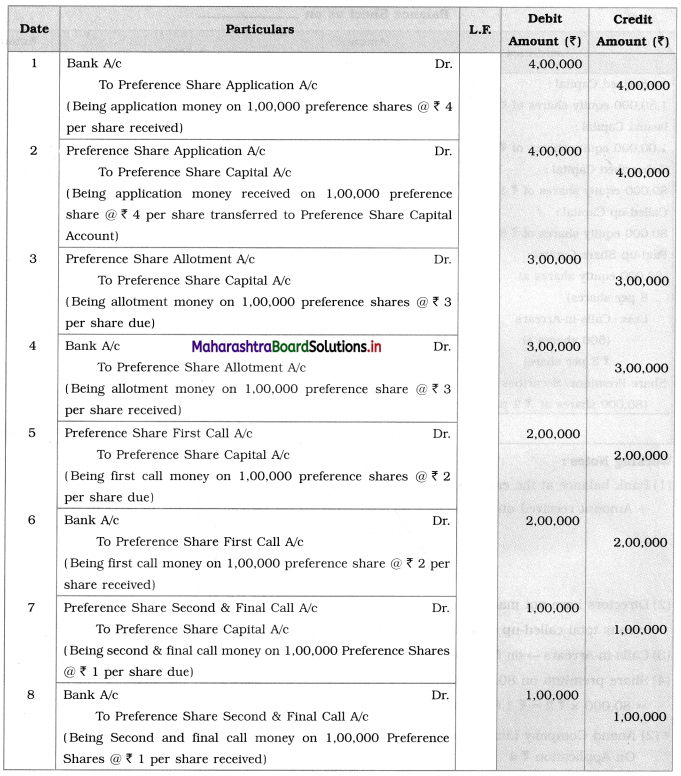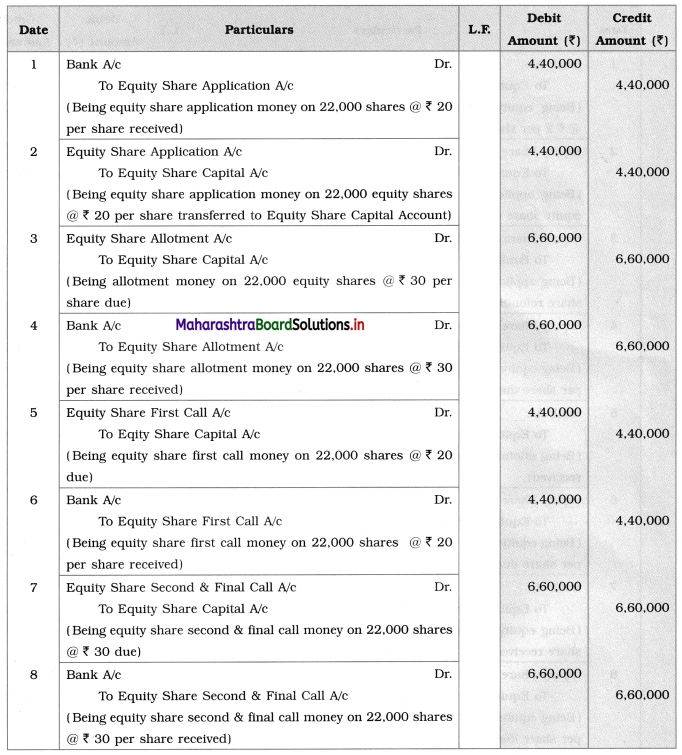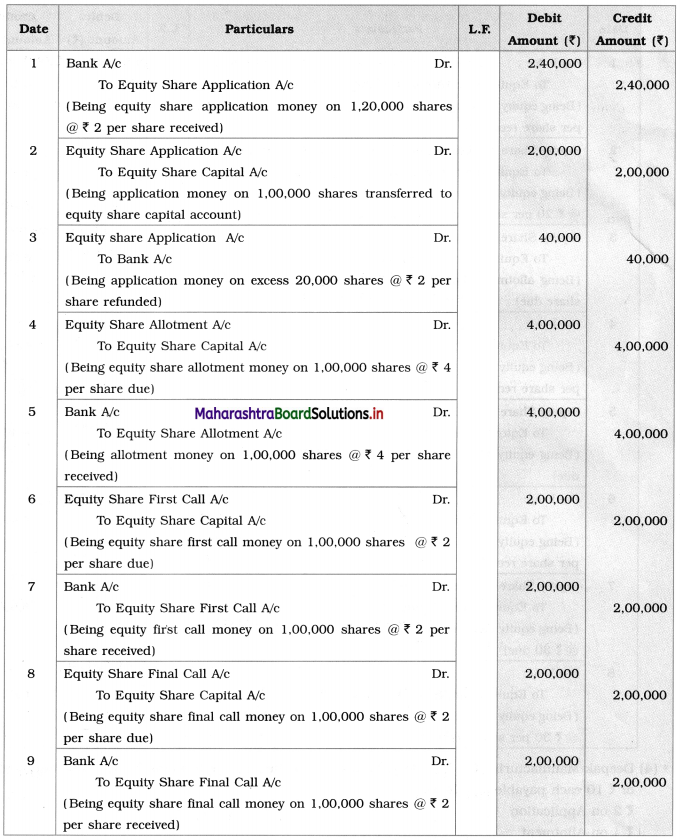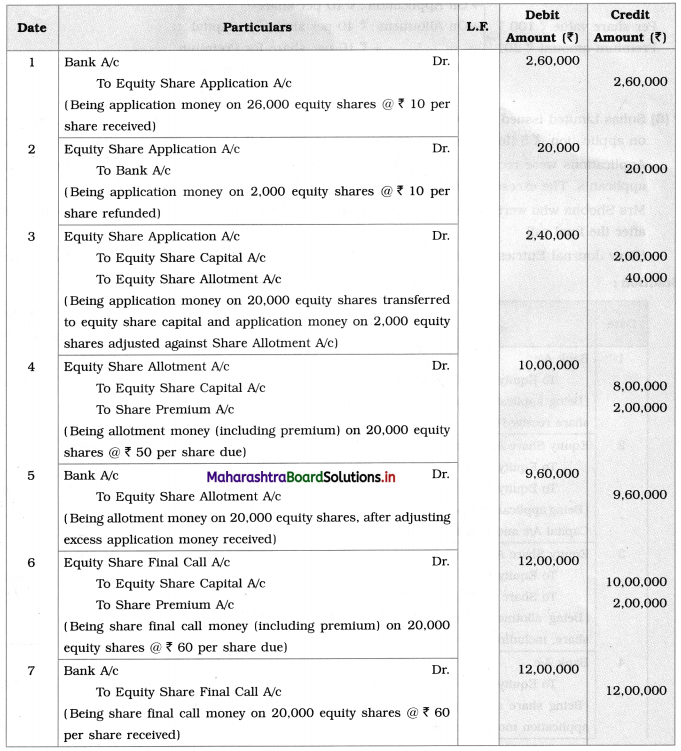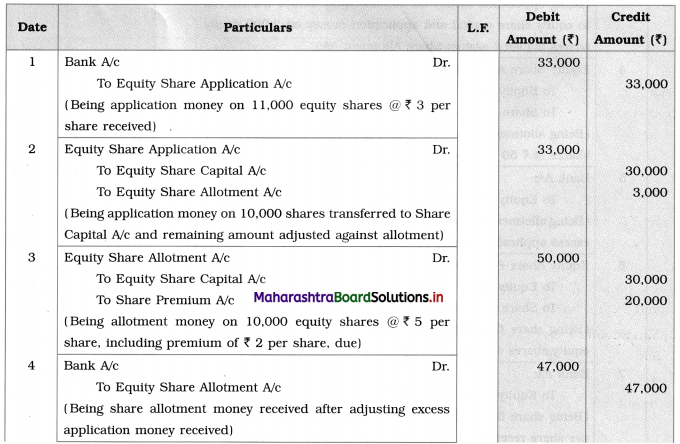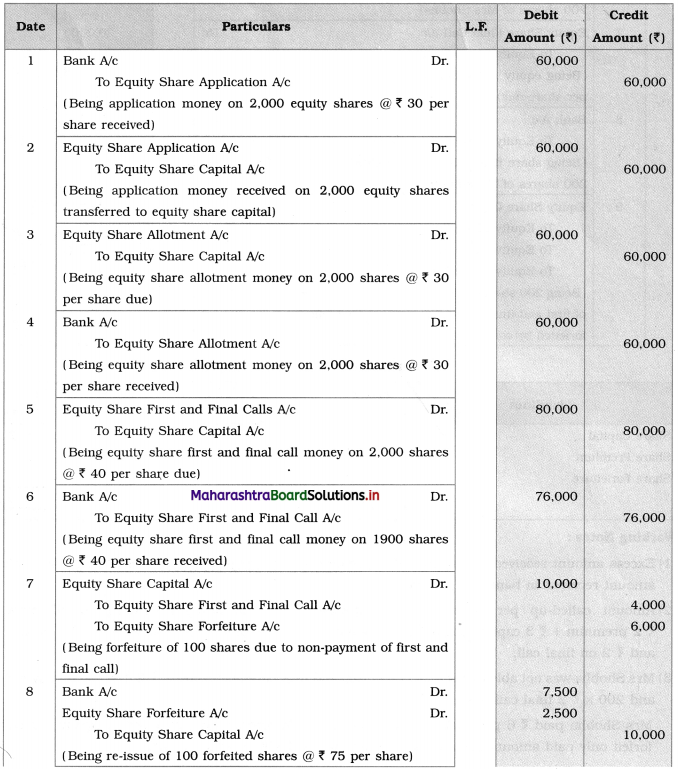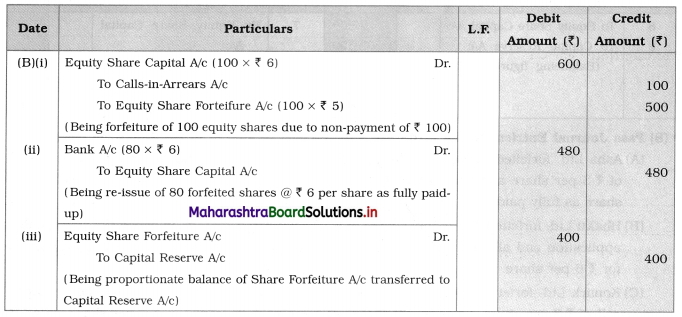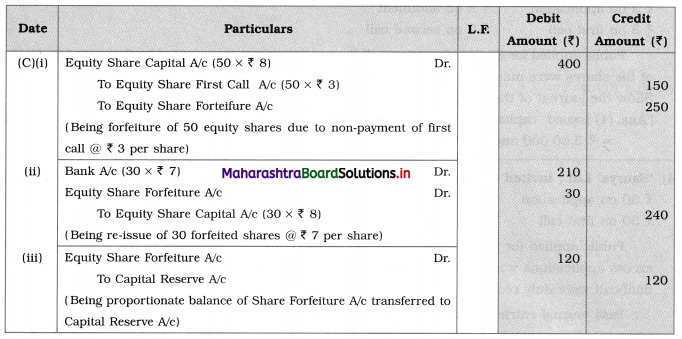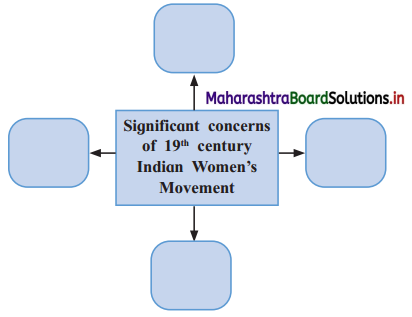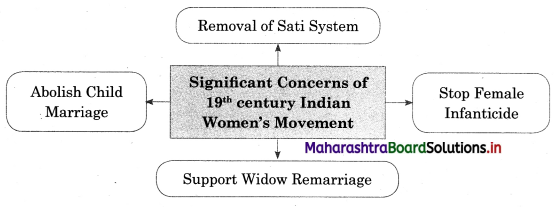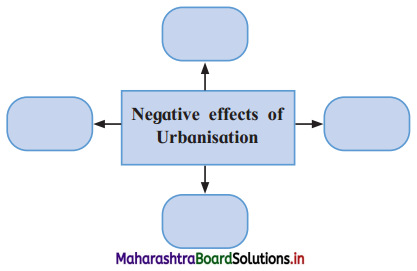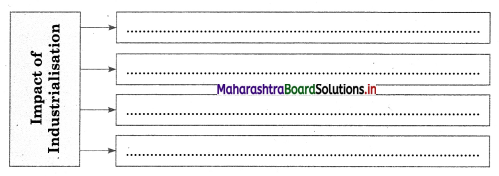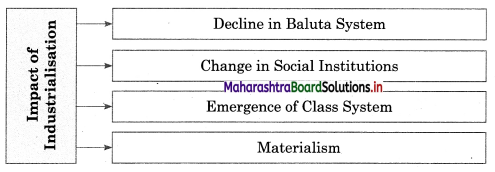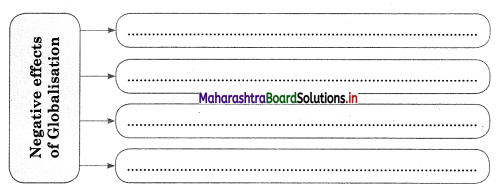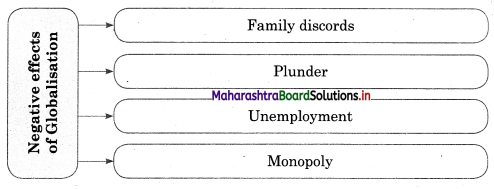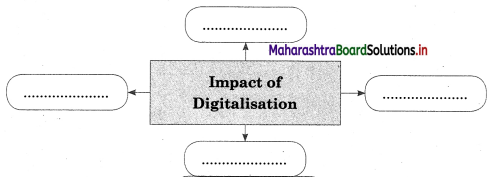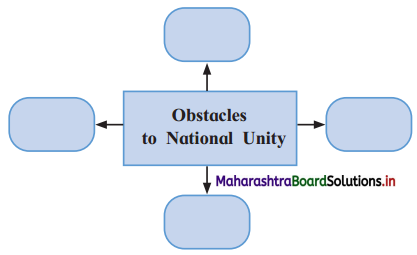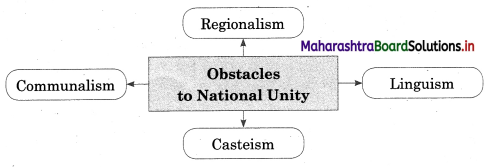Balbharti Maharashtra State Board Class 12 Psychology Solutions Chapter 3 Personality Textbook Exercise Questions and Answers.
Maharashtra State Board Class 12 Psychology Solutions Chapter 3 Personality
1. Choose the correct option and complete the following statements.
Question 1.
A person who is shy and reserved is called an ……………..
(a) introvert
(b) extrovert
(c) ambivert
Answer:
(a) introvert
Question 2.
The Ink-Blot test was developed by psychologist ………………….
(a) Murray
(b) Rorschach
(c) Morgan
Answer:
(b) Rorschach
![]()
Question 3.
……………….. traits are the dominant characteristics of a person.
(a) Cardinal
(b) Secondary
(c) Central
Answer:
(a) Cardinal
2. Match the Pair
Question 1.
| Group A | Group B |
| (1) Self-report technique | (a) Interview |
| (2) Behavioural analysis | (b) MMPI |
| (3) Projective methods | (c) Permanent characteristics |
| (d) TAT |
Answer:
| Group A | Group B |
| (1) Self-report technique | (b) MMPI |
| (2) Behavioural analysis | (a) Interview |
| (3) Projective methods | (d) TAT |
3. State whether the following statements are true or false.
Question 1.
Personality is merely related to external appearance.
Answer:
False
Question 2.
People with high neuroticism are emotionally reactive.
Answer:
True
![]()
Question 3.
Children from families having a warm emotional atmosphere are well adjusted.
Answer:
True
4. Explain the concepts in 25 – 30 words each.
Question 1.
Personality
Answer:
The word personality is derived from the Latin word ‘persona’ which was used to refer to masks worn by actors during a stage performance, Thus, the meaning of personality was interpreted as ‘projected behaviour’ of an individual.
According to Gordon Allport, “Personality is the dynamic organization within the individual of those psychophysical systems that determines his unique adjustments to the environment.” According to Norman Munn, “Personality is a unique combination of individual’s physical structure, needs, interests, abilities and aptitudes.”
Question 2.
Trait
Answer:
A trait is a relatively enduring and consistent way of thinking, feeling and acting. It is some distinctive characteristic of the person that leads him/her to behave in more or less consistent ways across situations and over a period of time. Allport categorised traits as: (i) Cardinal Traits (single, dominant trait) (ii) Central Traits (core or basic traits) (iii) Secondary Traits
Question 3.
Sentence Completion Test
Answer:
Sentence Completion Test (SCT) is a type of projective technique used to assess personality. The individual is given a series of incomplete sentences and is asked to complete them in his/her own words, for e.g., My mother, My greatest fear is It is assumed that the endings provided by the person will reflect their motivation, urges, internal conflicts etc.
Question 4.
Structured interview
Answer:
Interview is a process in which the interviewer collects information about the personality of an interviewee by asking him/her specific questions. The main types of interview depending on the purpose of assessment are – structured and unstructured interview.
In structured interview, the number, type and sequence of questions to be asked are pre-determined. The answers expected from the interviewee are also specific. This type of interview is used where exact quantification is required, for e.g., industrial psychologists use structured interviews to select employees for a job.
![]()
Question 5.
Unstructured interview
Answer:
Interview is a process in which the interviewer collects information about the personality of an interviewee by asking him/her specific questions. The main types of interview depending on the purpose of assessment are – structured and unstructured interview.
In unstructured interview, the type and sequence of questions to be asked by the interviewee are not pre-determined. Detailed answers can be given and scoring is often subjective. It is employed by clinical psychologists, counsellors, etc.
5. Write short notes on the following in 50 – 60 words each.
Question 1.
Gordon Allport’s trait theory of personality.
Answer:
The word personality is derived from the Latin word ‘persona’. According to Gordon Allport, “Personality is the dynamic organization within the individual of those psychophysical systems that determines his unique adjustments to the environment.”
A trait is a relatively enduring and consistent way of thinking, feeling and acting. It is some distinctive characteristic of the person that leads him/her to behave in more or less consistent ways across situations and over a period of time. Allport categorised traits as Cardinal traits, Central traits and Secondary traits.
(i) Cardinal Traits – It is a single trait that dominates the individual’s personality. Every action of the person can be traced to the influence of this trait, for e.g., in case of Gandhiji honesty is the cardinal trait, in case of Napoleon, the cardinal trait was ambition.
(ii) Central Traits – These traits are ‘core’ traits or ‘basic’ characteristics that form the building blocks of personality. There are about 5-10 traits such as sensitivity, sociability, diligence, etc., that can best describe an individual’s personality.
(iii) Secondary Traits – These traits play a minor role in personality as they appear only in specific situations or under specific circumstances. They are sometimes related to preferences or attitudes.
Question 2.
Effect of mass media on personality development.
Answer:
The word personality is derived from the Latin word ‘persona’ which was used to refer to masks worn by actors during a stage performance, Thus, the meaning of personality was interpreted as ‘projected behaviour’ of an individual.
According to Gordon Allport, “Personality is the dynamic organization within the individual of those psychophysical systems that determines his unique adjustments to the environment.”
The psycho-social factors that have an effect on personality include heredity, family, peer group, culture and mass media. Mass media includes print media e.g., newspapers; audio-visual media e.g., T.V. and new media e.g., internet. Media is a source of information, education, entertainment and even socialization. It has a considerable effect on our value system, behaviour patterns and personality. However, excessive dependence on media may lead to egocentrism, poor academic performance, difficult in concentration, sleep disturbance, etc.
![]()
6. Answer the following questions with given points in 100 – 150 words each.
Question 1.
Explain the Big Five Factors model of Personality.
Points:
(i) Openness to experience
(ii) Conscientiousness
(iii) Extroversion
(iv) Agreeableness
(v) Neuroticism
Answer:
The word personality is derived from the Latin word ‘persona’ which was used to refer to masks worn by actors during a stage performance, Thus, the meaning of personality was interpreted as ‘projected behaviour’ of an individual.
According to Gordon Allport, “Personality is the dynamic organization within the individual of those psychophysical systems that determines his unique adjustments to the environment.” According to Norman Munn, “Personality is a unique combination of individual’s physical structure, needs, interests, abilities and aptitudes
The Five Factor Model of or Big Five Personality theory, based on the trait perspective proposed by Robert McCrae and Paul Costa. The five broad trait factors are-
- Openness to Experience
- Conscientiousness
- Extroversion
- Agreeableness
- Neuroticism.
1. Openness to Experience – People who are open to experience are intellectually curious imaginative, appreciative of art, sensitive to beauty. They sometimes tend to think and act in nonconforming, adventurous ways. Individuals who score low on openness to experience tend to be conventional, resistant to change and prefer familiarity and routine. They may lack creativity and aesthetic sense.
2. Conscientiousness – It concerns the way in which people control, regulate and direct their impulses. People high in conscientiousness are hardworking, disciplined, responsible, dependable, etc, while those low on conscientiousness tend to be careless, unorganised, spontaneous, undisciplined, etc.
3. Extroversion – Extroversion is marked by pronounced engagement with the external world. People high on this trait are assertive, talkative, sociable, enthusiastic, etc. Individuals showing low extroversion tend to be shy, reserved, lack the activity levels of extroverts. They are low-key and disengaged from the social world.
4. Agreeableness – It refers to the ability of a person to get along with others and show a concern for social harmony. People high on this trait tend to be friendly, cooperative, generous and believe that people are basically decent and trustworthy. Persons low on agreeableness tend to be uncooperative, suspicious, even hostile and jealous.
5. Neuroticism – It refers to a tendency to experience negative emotions such as anger, anxiety or depression more intensely and for longer periods than normally experienced by others. Those who score high on neuroticism tend to be irritable, fearful, emotionally unstable and interpret ordinary situations as threatening and hopeless. People who score low in neuroticism are less emotionally reactive and hence tend to be calmer, emotionally stable and experience more of positive feelings.
![]()
Question 2.
Explain the factors influencing personality.
Points:
(i) Family
(ii) School
(iii) Peer group
(iv) Culture
Answer:
The word personality is derived from the Latin word ‘persona’ which was used to refer to masks worn by actors during a stage performance, Thus, the meaning of personality was interpreted as ‘projected behaviour’ of an individual.
According to Gordon Allport, “Personality is the dynamic organization within the individual of those psychophysical systems that determines his unique adjustments to the environment.” According to Norman Munn, “Personality is a unique combination of individual’s physical structure, needs, interests, abilities and aptitudes
Personality is shaped by biological factors such as heredity and hormones secreted by endocrine glands as well as psychosocial factors such as family, school, peer group, culture, mass media, etc.
(i) Family – As the first agency of socialization, the family exerts a strong influence on personality. Aspects of family such as family structure, atmosphere, and relationships, family interactions and childrearing practices influence personality, for e.g., if parents show rejection or over protection, etc., towards the child it leads to low self-esteem and adverse effects on the personality. A family with a warm emotional atmosphere and where parents adopt democratic discipline and show love, respect and concern for the children will positively influence the child’s personality, i.e., boost self-esteem.
(ii) School – Various aspects of school such as teaching-learning process, academic and co- curricular facilities, role of the teachers, school location, management and discipline, etc., influence the child’s personality, for e.g., teachers who are well qualified, creative, build a rapport which the students, tend to motivate students and help them to develop a good personality.
(iii) Peer group – It refers to individuals of the same age group, e.g., classmates or sharing the same interests, e.g., members of a sports club. Influence of the peer group is most noticed in adolescence since it serves as a reference group. The influence of peer group on the person may be positive such as developing healthy gender attitudes, skills of communication, etc., or it may be negative e.g., developing aggressive tendencies, prejudices, etc.
(iv) Cultural factors – Culture refers to the customs, values and social behaviour of a particular society. Every culture has its own set of beliefs, norms, expectations, etc., which influence the thoughts, feelings and behaviour of its members.
Question 3.
Explain the various methods of personality measurement.
Points:
(i) Behavioural analysis
(ii) Self-report technique
(iii) Projective method
Answer:
The word personality is derived from the Latin word ‘persona’ which was used to refer to masks worn by actors during a stage performance, Thus, the meaning of personality was interpreted as ‘projected behaviour’ of an individual.
According to Gordon Allport, “Personality is the dynamic organization within the individual of those psychophysical systems that determines his unique adjustments to the environment.”
According to Norman Munn, “Personality is a unique combination of individual’s physical structure, needs, interests, abilities and aptitudes. Personality can be assessed using techniques such as Self Report measures (inventories), Behavioural Analysis Techniques and Projective techniques.
(i) Behavioural Analysis Techniques
Behavioural Analysis techniques such as Interview and Observation can provide information about an individual’s personality in a variety of situations.
(a) Interview – It is a process in which the interviewer collects information about the personality of an interviewee by asking him/her specific questions. The main types of interview depending on the purpose of assessment are- Structured and unstructured interview.
- Structured interview – The number, type and sequence of questions to be asked in the interview are pre-determined. The answers expected are also specific. This type of interview is used where exact quantification is required, for e.g., industrial psychologists use structured interviews to select employees for a job.
- Unstructured interview – The type and sequence of questions to be asked by the interviewer are not pre-determined. Detailed answers can be given and scoring is often subjective. It is employed by clinical psychologists, counsellors, etc.
(ii) Self-Report Technique (Inventories)
The individual provides information about his/her personality by responding to statements/ questions on the inventory, for e.g., Minnesota Multiphasic Personality Inventory (MMPI), 16 Personality Factor Questionnaire (16 PFQ), etc. Responses are scored in quantitative terms and interpreted on the basis of norms that are developed for the test.
(iii) Projective Techniques
Projective techniques emerged from the psychoanalytic perspective. The individual responds freely to relatively unstructured or ambiguous stimuli/material. It is assumed that individuals project their own personality onto these stimuli, often revealing personal conflicts, coping styles, etc. Projective techniques cannot be scored in an objective manner. They use various materials like ink-blots, ambiguous pictures, incomplete sentences, word associations, etc. Main projective techniques include Rorschach’s Ink-Blot Tests, Thematic Apperception Test (TAT), Sentence Completion Test, etc.
![]()
Class 12 Psychology Chapter 3 Personality Intext Questions and Answers
ACTIVITIES (Textbook Page. No. 23)
Activity 1
Read the following examples and express your opinion about the concept of personality:
(i) Rohan is a good looking boy. He is a genius, but extremely arrogant. He always shouts at his friends. He always talks very rudely to his parents.
(ii) Ruchi is a girl with ordinary looks. She is poor in her studies but always gets along nicely with her friends. She always talks in a polite manner to everyone.
Answer:
[Information based question – refer textbook page no. 23 (3.1)]
Activity 2 (Textbook Page. No. 24)
Look at the list given below and discuss which of these factors have a stronger influence in shaping personality :
(i) Nutritious diet (ii) Junk food (iii) Physique (iv) Exercise (v) Technology (vi) Peer group (vii) Parents (vii) Neighbours (ix) Relatives (x) Childhood experiences.
Answer:
All the given factors tend to shape our personality. However, parents, peer group, physique, childhood experiences tend to exert greater influence.
Activity 3 (Textbook Page. No. 25)
Think how the peer group may influence you with respect to factors given below:
(i)Hairstyle (ii) Dressing style (iii) Eating habits (iv) Study habits (v) Communication skills (vi) Attitudes (vii) Decision making (viii) Likes and dislikes, etc
Answer:
The peer group refers to individuals who are of the same age or who tend to share similar interests. Peer group influences personality tremendously in late childhood and in adolescence. This may be in regard to physical appearance like hairstyle and dressing style. Peer group also influences how we interact with others i.e., interpersonal aspects like communication skills, decision-making, attitudes as well as personal preferences eating habits, study habits, like/dislikes, etc.
![]()
Activity 4 (Textbook Page. No. 27)
Make two separate lists of jobs requiring more need of talking and jobs requiring less need of talking. Try to find out which of your friends will be suitable for these two types of jobs.
Answer:
Jobs requiring more need of talking.
- Teacher
- Salesperson
- Human resource manager
- Lawyer
- Event planner
Jobs requiring less need of talking.
- Writer
- Computer programmer
- Librarian
- Accountant
- Researchers.
![]()
Activity 5 (Textbook Page. No. 29)
Use observation method and try to get few ideas of the personalities of the following individuals:
- Traffic controller
- News reporter
- Private detective
- Interior designer
- Nurse
- Teacher
Answer:
- Traffic controller – He/she must have physical stamina, mental agility, negotiation skills, organizational skills.
- News reporter – He/she must have curiosity, alertness, courage, language skills, empathy.
- Private detective – He/she must be trustworthy, persistent, sociability, technological skills.
- Interior designer – He/she must have creativity, interpersonal skills, aesthetic skills, communication skills.
- Nurse – He/she must show empathy, stamina, communication skills, diligence, interpersonal skills.
- Teacher – He/she must have good interpersonal and communication skills, be patient, creative.





